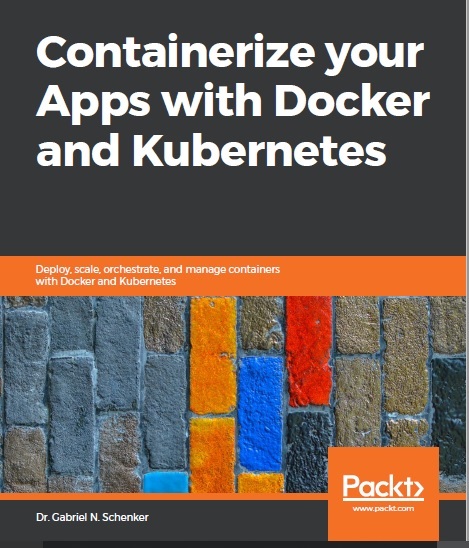
Background
Containerize your Apps with Docker and Kubernetes is an excellent free book from Gabriel N. Schenker
You can download the whole book by registering HERE
In this post, I explain the significance of deploying apps with Docker and Kubernetes and also some of my thinking at the University of Oxford artificial intelligence cloud and edge impleme… course.
Oxford for AAA AI edge engineering “Ability to deploy AI and ML models in containers at the Edge”
The book table of contents is
Chapter 1: What Are Containers and Why Should I Use Them?
Chapter 2: Setting up a Working Environment
Chapter 3: Working with Containers
Chapter 4: Creating and Managing Container Images
Chapter 5: Data Volumes and System Management
Chapter 6: Distributed Application Architecture
Chapter 7: Single-Host Networking
Chapter 8: Docker Compose
Chapter 9: Orchestrators
Chapter 10: Orchestrating Containerized Applications with Kubernetes
Chapter 11: Deploying, Updating, and Securing an Application with Kubernetes
Chapter 12: Running a Containerized App in the Cloud
Significance of Containerization
Containers are the best way to implement a DevOps architecture. This book explains the end-to-end deployment of containers for an Azure environment – including container orchestration through Kubernetes. The book explains the software supply chain and the friction within it – and then presents containers as a means to reduce this friction and add enterprise-grade security on top of it.
The analogy of a shipping container in the transportation industry is often used to describe software containers. In a shipping container, the container is a box with standardized dimensions (length, width and height) and can be treated as a black box from the shipper’s standpoint. Also, the shipper is not concerned about the contents of the container
Containers unify the world of development and deployment. Prior to devops/containers – developers would hand over the code to the operations engineers who were then supposed to install it on the production servers and get it running. This process got complex and error-prone with many developers deploying different applications and versions to those applications. The problem was further compounded due to management of many dependencies and very short release cycles. Containers overcome these problems by encapsulating the application and all external dependencies – ex as in a Docker container.
Containers provide a number of benefits:
Improving security: Container images are immutable and can be scanned
for known vulnerabilities and exposures. We can also ensure that the author of
a container image is who they claim to be.
Simulating production-like environments: Containers help simulate a production-like
environment, even on a developer’s laptop.
Standardizing infrastructure
Standardised infrastructure – Every server becomes another Docker host. We do not need to install special libraries or frameworks to manage dependencies.
AI on Edge devices using containers
Note this section relates to my personal work
at the University of Oxford artificial intelligence cloud and edge impleme… course. It is not a part of the above book
I am exploring the idea of the benefits of containers on Edge devices. All the benefits of containers in reducing friction over the software supply chain also apply to the Edge. I see AI edge engineering as the “Ability to deploy AI and ML models in containers at the Edge”
The philosophy of packaging into containers enables us to run algorithms more effectively because machine learning and Deep learning projects need to manage deployment with an increasingly complex software stack. By using pre-packaged containers which are optimised for performance and tested for compatibility, you can get started easily.
Some more notes:
- We can see deep learning containers on the Edge by application type (ex for energy etc)
- Also, deep learning containers on the Edge by device type – ex specific processor types
There are already a number of initiatives covering this trend
Best Practices of Implementing Intelligent Edge Solutions with Azur…
slides 10 , 11 and 12 for the big picture
slide 30 “Model Management – Inferencing Target” – how models will vary depending on target hardware ie the model is the same in the cloud but exploits the best features of the target processor
Docker – ARM collaboration – cloud-based development environment for writing and delivering applications to cloud, edge and IoT devices. .
Google – Deep Learning Containers
Azure ML with ONNX runtime across a range of hardware
I see containers on the Edge to be the key feature of AI Edge Engineering – especially as Edge applications become more complex from Oil Rigs to Autonomous vehicles
Welcome your comments
You can download the whole book by registering HERE
